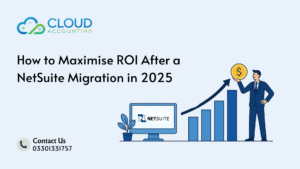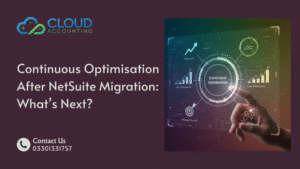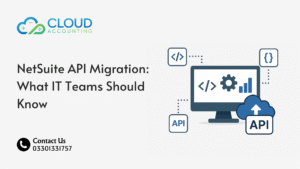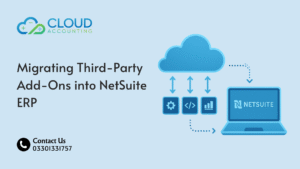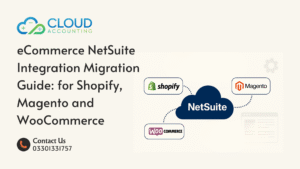When the dust settles after a NetSuite migration, most teams notice something surprising. The real work isn’t over. In many cases, it’s only just beginning. That’s where NetSuite Migration Optimisation steps in. It helps you shape the system into something that fits your business better each month, not just on day one.
Many businesses assume that once NetSuite is live, everything will run at full speed automatically. But as your team starts using the system, small issues appear. A report takes too long to load. A workflow doesn’t match how tasks are done in real life. A saved search returns strange results. None of these problems mean the migration failed it simply means the system needs tuning.
Optimisation is what turns a “working” NetSuite setup into a “high-performing” one. It reduces manual work, improves accuracy, and gives leadership better data to make decisions. And because every business changes, ongoing optimisation is the only way to keep your system aligned with your goals.
This guide walks you through what to look at after go-live, the improvements that matter most, and the steps you can take next to move your NetSuite environment into top shape.
Why Continuous Optimisation Matters After Migration
Once your team starts using NetSuite every day, patterns appear that weren’t visible during testing. That’s why optimization becomes so important right after go-live. It helps you fix gaps early and shape the system around how your business truly operates.
You may notice delays in approvals, slow reports, or steps that require too many clicks. These small issues add up. They affect productivity, accuracy, and even team morale. Continuous optimisation gives you a way to spot these weaknesses early and improve them before they turn into bigger problems.
Another reason optimisation matters is growth. As your business scales, NetSuite needs to adapt along with it. New departments join. More data flows through the system. Additional apps connect to your ERP. Without ongoing improvements, the gap between your processes and your system widens. That gap eventually slows down decision-making and erodes confidence in your reports.
Continuous optimisation also keeps your setup aligned with NetSuite updates. Each release introduces new features that can replace old workarounds, improve speed, or reduce manual tasks. But you only benefit from them if someone reviews your current setup and applies the changes that make sense.
In short, optimisation is not a task. It’s a long-term approach. It ensures that your NetSuite Migration Optimisation strategy works today, tomorrow, and as your business keeps growing.
Key Areas to Review After Your NetSuite Migration
When you look at your system after go-live, it helps to focus on the areas that affect performance the most. This gives you a clear roadmap for your NetSuite Migration Optimisation plan and helps you make improvements that deliver quick wins.
1. System Performance and Loading Speed
You notice these issues fast. Pages load slowly. Searches take too long. Dashboards freeze. These signs show that your setup may need tuning. Sometimes the fix is as simple as adjusting filters or cleaning old data. Other times, you may need to review scripts or workflows that run in the background.
2. User Roles and Permissions
Your team may have started with basic roles during the migration. But day-to-day tasks usually reveal where the roles don’t match the work. Maybe someone can’t access a key report. Or perhaps users have too much access, which can raise risks. Reviewing roles early helps you improve security and reduce confusion.
3. Data Quality and Accuracy
It’s normal for small data issues to appear after migration. Duplicates, incomplete fields, or mismatched records often surface only when people begin working in the system. A strong optimisation plan includes regular data checks to keep your information reliable.
4. Workflows and Business Processes
Your migration probably included some workflows based on assumptions. Now that your team is using NetSuite daily, those assumptions get tested. A process may need fewer steps. A workflow may need a new approval. Tweaking these processes helps your system match your real operations.
5. Reports, Dashboards, and Searches
This is where decision-makers focus their attention. If your saved searches or dashboards don’t show the right data, or if reports take too long to generate, it’s time for an update. Optimising these areas brings clarity, speed, and trust to your reporting.
6. Integrations and Connected Apps
If you integrate tools like Shopify, HubSpot, Amazon, or payroll systems, they need careful review after migration. Sync timing, field mapping, and error handling all play major roles in smooth operations. Regular checks help prevent data gaps or slow response times.
By focusing on these core areas, you set a strong foundation for ongoing NetSuite Migration Optimisation and build a system that improves each month.
How to Improve Performance After Go-Live
Once your system is live, the quickest wins usually come from fine-tuning performance. These improvements help your team work faster and reduce the small frustrations that slow down daily tasks. A smart NetSuite Migration Optimisation plan focuses on targeted steps that bring measurable results.
1. Review and Clean Up Saved Searches
Saved searches often slow down the entire system without anyone realizing it. Many are created during testing and never revisited. When they run automatically or use broad filters, they drain processing power. Cleaning them up helps pages load faster and frees resources for the tasks your team actually uses.
2. Audit Custom Scripts
Scripts written during migration may not be perfect. Some run too often. Some use logic that doesn’t match real operations. Others trigger at the wrong time. Reviewing these scripts helps you remove unnecessary steps, simplify calculations, and reduce system lag.
3. Update Workflows Based on Real Usage
Workflows built on assumptions usually make sense during design but not always in real life. Once your team starts using them daily, you’ll see where steps can be reordered, removed, or improved. Optimising workflows keeps tasks moving smoothly and reduces backlogs.
4. Improve Dashboards for Faster Loading
Dashboards with too many portlets or heavy saved searches can slow down login times. A quick optimisation—like limiting portlets, refreshing only key metrics, or switching to lighter searches—helps dashboards load instantly and boosts user satisfaction.
5. Check Integration Logs for Slow Points
If integrations with Shopify, Amazon, CRM systems, or payroll tools run slowly, the issue often sits in data mapping or timing. Regular log reviews help you identify blockers early and improve sync reliability.
6. Revisit Forms and Field Settings
Too many custom fields, unused fields, or outdated form layouts can slow down entry screens. Small adjustments—like hiding unused fields or reorganising layouts—make the system easier to use and improve speed at the same time.
These improvements turn a basic setup into a well-tuned system. When done regularly, they form the backbone of any effective NetSuite Migration Optimisation plan.
Enhancing User Experience and Adoption
When a new system goes live, most teams only use a small portion of its full capability. That’s why improving user experience becomes a major part of NetSuite Migration Optimisation. A system your team understands and enjoys using will deliver better results, cleaner data, and fewer mistakes.
1. Simplify Navigation for Daily Tasks
Users often feel overwhelmed when they first enter NetSuite. Too many menu options or unfamiliar screens slow everyone down. Simplifying navigation by tailoring menus to each role helps people find what they need faster and reduces training time.
2. Provide Short, Targeted Training Sessions
Long training sessions rarely stick. Short, focused sessions work better. These cover the exact tasks users handle each day—creating invoices, checking stock, approving expenses, or running reports. When training matches real work, adoption improves quickly.
3. Build Role-Based Dashboards
A generic dashboard doesn’t help anyone. Tailored dashboards give each user a clear view of their responsibilities—open tasks, overdue approvals, important KPIs, or active customers. This keeps everyone organized and reduces time spent searching for information.
4. Create Clear Documentation for Common Processes
Even experienced users forget steps over time. Quick guides or short videos for frequent actions help reduce errors and support tickets. Clear documentation also helps new employees settle in without confusion.
5. Collect Feedback and Act on It
Users spot issues long before management does. Asking for feedback after go-live gives you insight into what isn’t working. When people see that improvements are made based on their comments, confidence in the system grows fast.
By improving the user experience, you ensure that your NetSuite Migration Optimisation strategy doesn’t focus only on technology—it supports the people using the system every day.
Keeping Your Data Clean and Reliable Over Time
Once your team starts entering data into NetSuite every day, quality issues can appear quickly. Small mistakes—like missing fields, outdated records, or duplicates—grow over time and create bigger reporting problems. That’s why a good NetSuite Migration Optimisation plan always includes regular data checks.
1. Review Duplicate Records
Duplicates often appear after a migration, especially in customers, vendors, or items. They confuse users and distort reports. A routine review helps you catch and merge these records before they cause larger issues.
2. Validate Required Fields
Missing fields create gaps that affect sales reporting, purchasing decisions, and financial accuracy. Setting validation rules or using reminders helps your team complete all key fields when entering data.
3. Archive Old or Unused Data
Outdated data slows searches and makes dashboards harder to read. Archiving old transactions or inactive customers keeps your system light, faster, and easier to navigate.
4. Monitor Imported Data from Integrations
If you’re pulling data from Shopify, Amazon, CRM tools, or warehouse systems, errors can slip in quietly. Regular monitoring of integration logs helps you catch mismatches, failed syncs, or incomplete entries early.
5. Schedule Periodic Data Cleansing
A quarterly or monthly review keeps your NetSuite environment clean. This includes fixing naming issues, updating categories, checking item attributes, and realigning fields with current business rules.
Clean, consistent data is the foundation of strong reporting and confident decision-making. When you include data maintenance in your ongoing NetSuite Migration Optimisation efforts, you protect the integrity of your entire system.
Leveraging NetSuite Updates and New Features
Every year, NetSuite rolls out new features, performance improvements, and security updates. Many businesses overlook these changes, but they can dramatically improve your system. Staying updated is a major part of long-term NetSuite Migration Optimisation and helps you get more value from the platform you already use.
1. Review Release Notes Twice a Year
NetSuite releases two major updates: one early in the year and another later. Each release includes new tools, replaced features, and improvements that can simplify your processes. Reviewing the notes helps you see which updates can remove old workarounds or speed up existing workflows.
2. Test New Features in a Sandbox First
Instead of applying new features directly to your live account, try them in a sandbox environment. This helps you understand their impact and avoid disruptions. It also gives your team time to adapt before the changes go live.
3. Replace Old Workarounds with New Capabilities
Many setups include workarounds created during migration. As NetSuite evolves, these workarounds often become unnecessary. Replacing them with newer built-in features improves stability, speed, and usability.
4. Identify Features That Support Growth
Your needs will expand as your business grows. New tools for forecasting, budgeting, or automation can help you scale without adding manual work. Reviewing these features regularly ensures your system evolves alongside your business.
5. Train Your Team on Useful Enhancements
Even the best new feature is useless if no one understands it. Short training sessions after each release help your team adopt updates quickly and reduce confusion.
Keeping track of NetSuite updates ensures your system doesn’t fall behind. When you make updates a routine part of your NetSuite Migration Optimisation strategy, you continuously improve performance, stability, and user experience.
Building a Continuous Improvement Roadmap
Once your system is live and stable, you need a roadmap that guides your next steps. This helps you avoid random fixes and work on improvements that actually support your goals. A clear roadmap is a key part of any long-term NetSuite Migration Optimisation strategy.
1. Set Monthly or Quarterly Review Sessions
Regular review sessions keep everyone aligned. These meetings help you identify what’s working, what’s slowing your team down, and what new priorities are emerging. A predictable review cycle ensures optimisation never gets forgotten.
2. Create a List of High-Impact Improvements
Some improvements deliver more value than others. Faster searches, better dashboards, and cleaner data usually sit near the top. Prioritizing by impact helps you plan upgrades that improve performance fast and support business growth.
3. Track User Feedback and Pain Points
Your users interact with NetSuite every day, so they see problems early. Collecting feedback from them helps you make informed improvements. When you act on their input, you reduce errors, improve adoption, and build trust in the system.
4. Align Future Improvements With Business Goals
Your business will change over time. New departments, new products, or new markets may require updates in NetSuite. Aligning optimisation with your growth plans keeps your system relevant and ready for what’s next.
5. Document Every Update
Documentation is often overlooked, but it avoids confusion later. Each optimisation—whether a script change or a workflow update—should be recorded. This helps new team members understand how the system works and makes troubleshooting easier.
A well-structured roadmap turns optimisation from a reactive task into a proactive process. With a clear plan guiding your NetSuite Migration Optimisation efforts, you keep your system healthy, scalable, and ready for long-term success.
When to Bring in a NetSuite Expert
There comes a point where internal teams reach their limit. It’s not a lack of skill — it’s simply the nature of a growing ERP system. As NetSuite expands with more users, integrations, and transactions, some improvements require deeper experience. Knowing when to involve a NetSuite expert can save time, reduce frustration, and protect your data.
1. When Performance Issues Keep Returning
If your system feels slow even after internal clean-ups, the underlying cause may be in scripts, workflows, or architectural design. Experts can spot these issues quickly and make changes that bring lasting improvements.
2. When You Need Advanced Customisation
Some enhancements require SuiteScript, SuiteFlow, SuiteAnalytics, or complex integrations. If your team is unsure how to implement these safely, an expert can guide you, build the solutions, and avoid risky mistakes.
3. When Integrations Become Unreliable
If data from Shopify, Amazon, CRM tools, warehouse systems, or payment gateways stops syncing correctly, you may need someone who understands both NetSuite and the external platform. A specialist can fix mapping issues, speed up sync times, and prevent data loss.
4. When Your Team Is Spending Too Much Time on Manual Tasks
If staff are still downloading spreadsheets, entering data by hand, or running reports manually, automation may be the answer. An expert can automate these tasks in a way that matches your workflows and keeps your system stable.
5. When You Prepare for Growth or Expansion
New locations, new subsidiaries, or higher transaction volumes often require structural changes in NetSuite. An expert ensures your setup supports growth without causing reporting issues later.
Bringing in an expert isn’t a sign of weakness — it’s smart resource management. By partnering with someone who understands the system deeply, you speed up your NetSuite Migration Optimisation journey and protect your system from long-term issues.
Final Thoughts + Summary
When your business goes live on NetSuite, it’s easy to think the migration is the final step. But the real transformation starts afterward. That’s where ongoing improvement, regular reviews, and smart adjustments come into play. NetSuite Migration Optimisation gives you a way to keep your system sharp, reliable, and aligned with how your business works today.
As your team uses NetSuite more, you’ll discover new opportunities to improve workflows, enhance reporting, and reduce manual work. These aren’t signs of a bad migration — they’re signs of a system settling into real-life operations. With consistent tuning, performance stays strong, data stays clean, and users understand exactly how to get work done without confusion.
Continuous optimization isn’t just maintenance. It’s a strategy that helps you get more value out of NetSuite each year. Cleaner data, faster dashboards, smoother approvals, and more automation give you the edge you need to grow confidently.
Whether you handle improvements in-house or bring in expert support, the important part is staying proactive. A system that gets regular attention will always outperform one that’s left unchanged after migration.
If you want to take the next step and improve your NetSuite environment further, ongoing optimisation is the smartest investment you can make.


